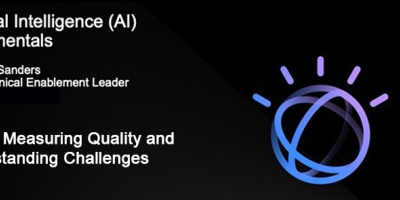Robots manufacturing robots, household appliances communicating with each other and their owners. And now AI systems are teaching themselves to create other AI systems without humans writing any code. Is there such a thing as being too smart?
There was a time when the thought of robots terrified people. Some thought robots would take over the world. Science fiction movies that I watched as a teenager depicted robots capable of invading our planet, threatening our way of life, even causing destruction and enslaving mankind. But I noticed during my twenties and thirties that the message had softened to robots that were built to serve the human race. Service-based robots were designed to clean the house and perform menial tasks and to manufacture and mass-produce consumer products faster and more consistently than humans alone. As I look around my home, it’s staggering to think how much smart technology and AI already exists in everyday appliances and our vehicles.
Robotic arms used in manufacturing are becoming more intelligent. They can be used for quality control to detect flaws in paint finishes or in the manufacture of tires. As one robot discovers a flaw, the machine-learning (ML) model can be updated and new versions of the ML model uploaded to all other robots on the factory floor, without having to send data back to the main data center for humans to analyze and update weeks later. This can help reduce the number of defects that would have gone unnoticed while waiting for new updated models. And yes, these robotic arms are building other robotic arms. More and more of the products and appliances we consume and interface with have some form of intelligence and interconnectivity built into them.
Certainly, AI has the ability to learn about data, create insights, and potentially predict outcomes faster and more consistently than humans can. Becoming progressively smarter without human interaction has many advantages. AI self-tunes its underlying models, their behavior, and even the dynamic choice of models used. Think of how autonomous and automatic adaptation could potentially revolutionize security, shopping experiences, health monitoring, service provisioning, communications, and more—just by being sensitive to, reacting to, and adapting to, for example, world events, economic changes, and new hacking methods being deployed by cyber criminals.
Up until this point, you might have assumed that these AI systems have been written and developed by humans, which is most likely true for the vast majority of AI systems in use today. But in the last year or so we have seen a growth in AI helping build other AI systems…and now the emergence of AI technologies with the ability to code AI systems.
GPT-3
Let’s consider GPT-3, a language generator from OpenAI. It’s supposedly capable of generating text that’s indistinguishable from human text in many cases. Using just a title, an author’s name, and an initial word, GPT-3 has demonstrated it can create short stories, songs, press articles, tech manuals, and much more. Not only can the technology create stories, but it can do so in a style almost identical to/indistinguishable from that of specific writers. Think about that for a moment: You can read articles that you find appealing because they are written in your own style, appealing to your own value systems and subconscious. So imagine a political message that contains certain points an organization may want to communicate but tailored to each person’s own persona. Have they got your attention yet?
Researchers have pondered whether AI could write/generate most of the code needed in the future. GPT-3, which is in use by beta testers, has that potential, regardless of programming language. It is apparently the largest language model, with 175 billion parameters at the time of writing this article (and yes, I wrote this article, not GPT-3, but don’t ask me to prove it).
GPT-3 has been trained on almost a trillion words, probably close to what exists on the Internet. Code is based on just words and mnemonics, so it should be able to learn to code in any language. Just by writing a description of a small app, explaining how it operates, and submitting it to GPT-3 (which has digested much of what exists on the web, as wells as code samples and tutorials) the system can generate working code in the programming language of your choice.
How Did This Happen?
GPT-3 was “built” by machine-learning algorithms studying statistical patterns (as stated previously) in close to a trillion words collected from digitized content. The system collects patterns of genres and situations—from specific code tutorials in various programming languages to obituaries, news reports, and more. It uses all it has digested to respond to, for example, a text prompt by generating new text with similar statistical patterns. Pretty clever, right?
But it’s not without flaws. Some people have claimed the service to be “unsafe.” For example, a website that creates tweets generated by GPT-3 suggested that the system associates certain races with certain stereotypical behaviors and that one gender has a poorer sense of direction from another, thereby demonstrating stereotypical bias found and quoted across the Internet. Nonetheless, could this technology have many tech companies or developers worried about their futures?
What Might Be Some Potential Issues?
The Internet is full of data. AI systems feed off data and become progressively smarter with each encounter. Does that mean that, given a few code samples in a given language, GPT-3 can continually produce enhanced AI code, potentially accelerating and advancing AI at an exponential rate? How might it be able to impact the billions of lines of open-source code that exist?
There is probably more misinformation than actual facts on the web and social media. While much fact-checking is being done by social media companies in response to social and other pressures, how will such a technology fare with misinformation?
If GPT-3 can write new content in the style of existing authors just by studying an author’s content, will there be potential copyright or faking issues?
AI developers may feel threatened by extinction while reading this, particularly while so much hype and speculation exists in this early adopter (“trigger”) phase. But history has shown that technology continues to generate more jobs and a realignment of skills. Not so long ago, the industry was very concerned about a shortage of good/experienced data scientists. More people trained up and reskilled to meet that demand.
Concluding
Smart robots will continue to build smarter robots. AI systems that can generate other AI systems might accelerate humans’ insights into our world, possibly unraveling the mysteries of life itself, potentially changing the way many industries operate, and creating new industries and business models that we can’t yet comprehend. The opportunities are endless. My experience of being in the industry for more than 30 years is that every technology goes through a life cycle from complete hype to over-promising to disillusionment and then realization of what it’s really good for and finally maturity. This includes disruptive technologies. Of course, the speed and duration of traveling through this lifecycle varies considerably depending on the technology and its applicability and value to the world. What is clear is that the world will continue to benefit from advancement in AI technologies while there will always be those who seek to exploit it for negative reasons. Fear, uncertainty, and doubt (FUD) will remain, sometimes out of ignorance and misunderstanding. But AI is there to augment humans’ ability. AI and automation will take over some aspects of life, even enhancing it beyond what we can possibly imagine, maybe creating a better world for some. The combination of AI and humans is greater than the individual parts in my opinion. AI is already proven in many aspects of our lives. The question remains how AI systems that can accelerate the creation of progressively smarter generations AI systems might impact our lives. No one is certain, but let your imagination run free after reading this. I doubt very much that if I described an app to GPT-3 that looked at stock trades, bonds, commodities, and how businesses in general operate and named it “make me money,” I would be able to retire by the end of year. But if I do, I’ll let y’all know.
In the meantime, if artificial intelligence and machine learning in general is an area of interest for you, check out a book that I had the opportunity and privilege to co-author titled Artificial Intelligence: Evolution and Revolution.
Stay smart. :)

























 More than ever, there is a demand for IT to deliver innovation. Your IBM i has been an essential part of your business operations for years. However, your organization may struggle to maintain the current system and implement new projects. The thousands of customers we've worked with and surveyed state that expectations regarding the digital footprint and vision of the company are not aligned with the current IT environment.
More than ever, there is a demand for IT to deliver innovation. Your IBM i has been an essential part of your business operations for years. However, your organization may struggle to maintain the current system and implement new projects. The thousands of customers we've worked with and surveyed state that expectations regarding the digital footprint and vision of the company are not aligned with the current IT environment. TRY the one package that solves all your document design and printing challenges on all your platforms. Produce bar code labels, electronic forms, ad hoc reports, and RFID tags – without programming! MarkMagic is the only document design and print solution that combines report writing, WYSIWYG label and forms design, and conditional printing in one integrated product. Make sure your data survives when catastrophe hits. Request your trial now! Request Now.
TRY the one package that solves all your document design and printing challenges on all your platforms. Produce bar code labels, electronic forms, ad hoc reports, and RFID tags – without programming! MarkMagic is the only document design and print solution that combines report writing, WYSIWYG label and forms design, and conditional printing in one integrated product. Make sure your data survives when catastrophe hits. Request your trial now! Request Now. Forms of ransomware has been around for over 30 years, and with more and more organizations suffering attacks each year, it continues to endure. What has made ransomware such a durable threat and what is the best way to combat it? In order to prevent ransomware, organizations must first understand how it works.
Forms of ransomware has been around for over 30 years, and with more and more organizations suffering attacks each year, it continues to endure. What has made ransomware such a durable threat and what is the best way to combat it? In order to prevent ransomware, organizations must first understand how it works. Disaster protection is vital to every business. Yet, it often consists of patched together procedures that are prone to error. From automatic backups to data encryption to media management, Robot automates the routine (yet often complex) tasks of iSeries backup and recovery, saving you time and money and making the process safer and more reliable. Automate your backups with the Robot Backup and Recovery Solution. Key features include:
Disaster protection is vital to every business. Yet, it often consists of patched together procedures that are prone to error. From automatic backups to data encryption to media management, Robot automates the routine (yet often complex) tasks of iSeries backup and recovery, saving you time and money and making the process safer and more reliable. Automate your backups with the Robot Backup and Recovery Solution. Key features include: Business users want new applications now. Market and regulatory pressures require faster application updates and delivery into production. Your IBM i developers may be approaching retirement, and you see no sure way to fill their positions with experienced developers. In addition, you may be caught between maintaining your existing applications and the uncertainty of moving to something new.
Business users want new applications now. Market and regulatory pressures require faster application updates and delivery into production. Your IBM i developers may be approaching retirement, and you see no sure way to fill their positions with experienced developers. In addition, you may be caught between maintaining your existing applications and the uncertainty of moving to something new. IT managers hoping to find new IBM i talent are discovering that the pool of experienced RPG programmers and operators or administrators with intimate knowledge of the operating system and the applications that run on it is small. This begs the question: How will you manage the platform that supports such a big part of your business? This guide offers strategies and software suggestions to help you plan IT staffing and resources and smooth the transition after your AS/400 talent retires. Read on to learn:
IT managers hoping to find new IBM i talent are discovering that the pool of experienced RPG programmers and operators or administrators with intimate knowledge of the operating system and the applications that run on it is small. This begs the question: How will you manage the platform that supports such a big part of your business? This guide offers strategies and software suggestions to help you plan IT staffing and resources and smooth the transition after your AS/400 talent retires. Read on to learn:
LATEST COMMENTS
MC Press Online